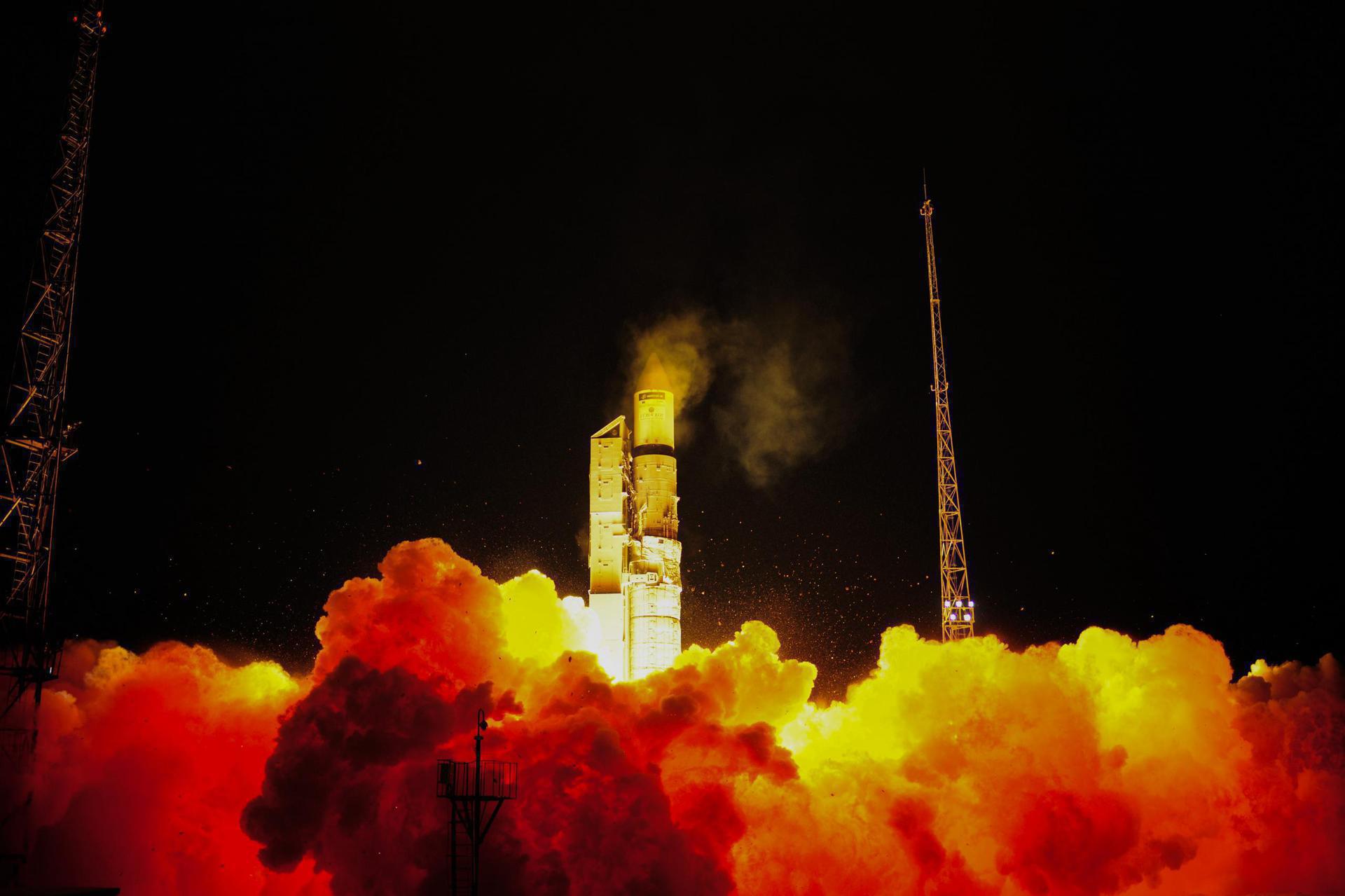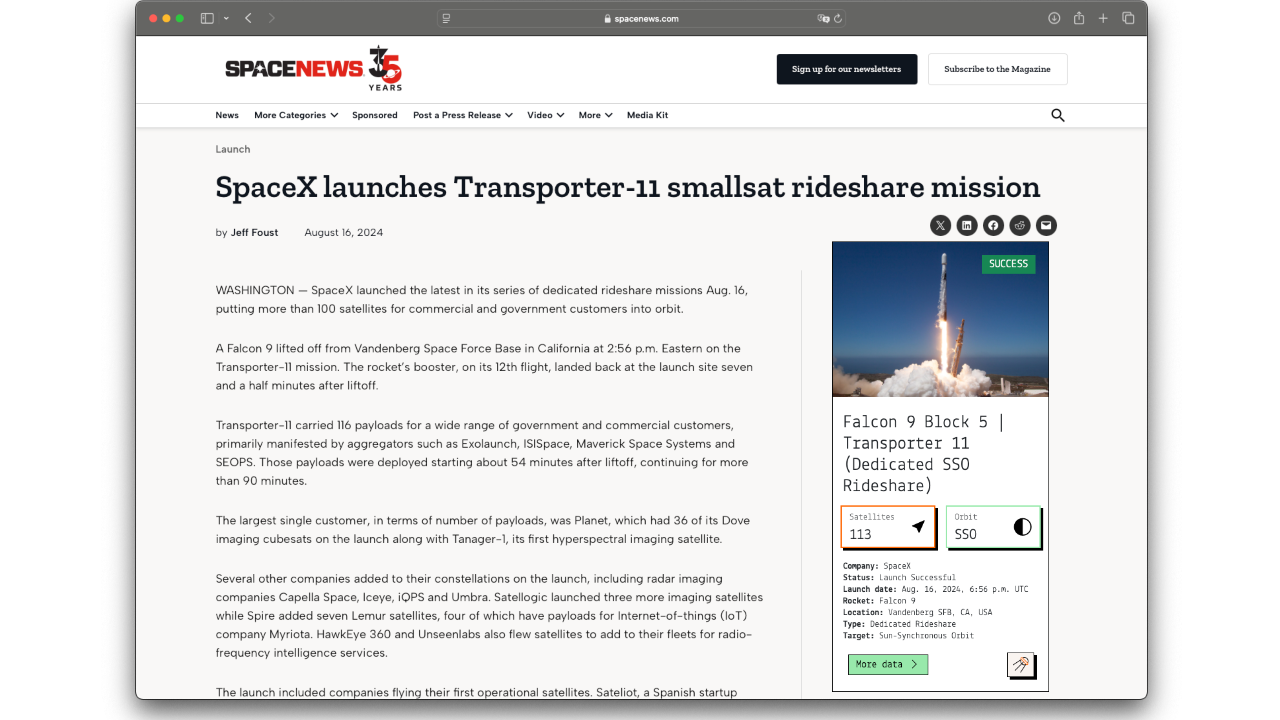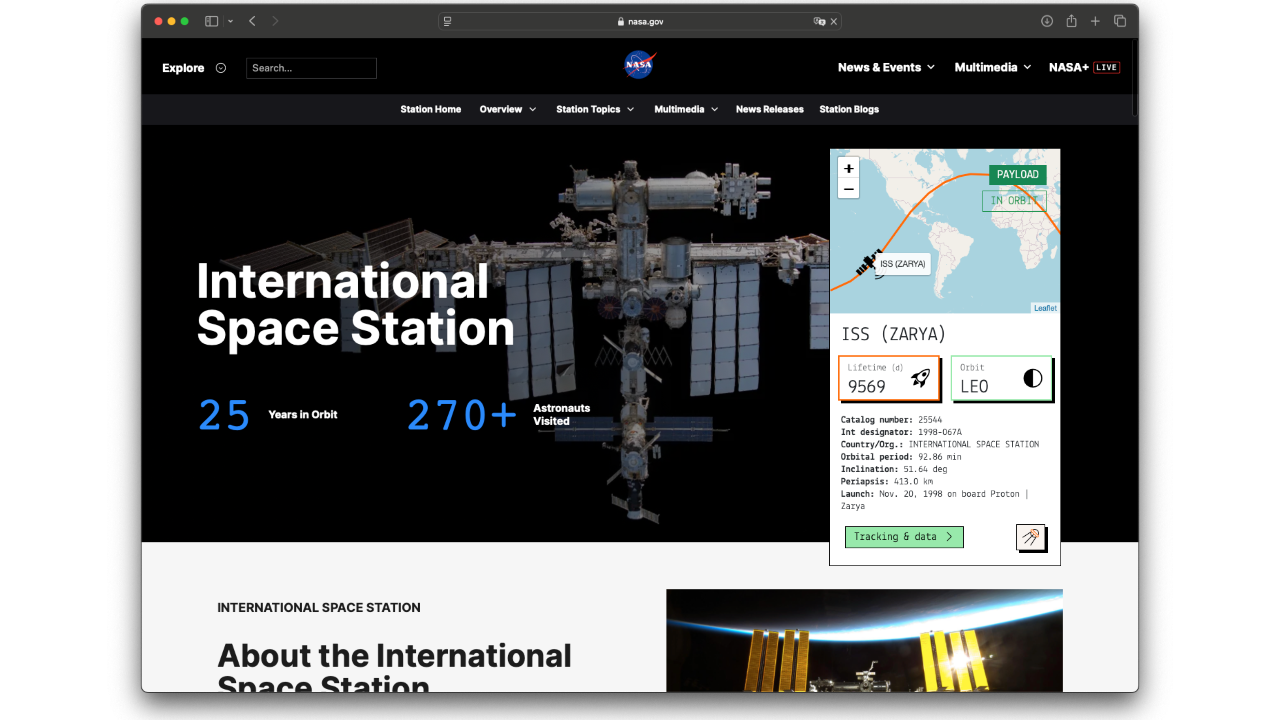Key statistics
Satellite SMOS at a glance.
Uptime
5886
Days in orbit
Revolutions
≈ 14.4
Per day
Orbit
SSO
Sun Synchronous Orbit
Inclination
98.4
Latest
Satellite identification and parameters
Extended collection of information and parameters for SMOS.
Object identification
Identified? True
Debris? False
Object name: SMOS
International designator: 2009-059A
Object number (NORAD): 36036
Object ID (CCSDS): 36036
Country: EUROPEAN SPACE AGENCY (ESA)
Current information (Y/N): Y
RCS size: LARGE
Orbital parameters
Period: 100.018 minutes
Inclination: 98.438 deg
SMA: 7137.487 km
Apoapsis: 760.137 km
Periapsis: 758.567 km
RAAN: 172.5329 deg
Eccentricy: 0.00010996
Argument of periapsis: 84.3394 deg
Mean anomaly: 275.7919 deg
Mean motion: 14.39742268 rev/day
Mean motion (dot): 0.00000596 rev/day2
B* drag term: 0.00020408765 1/REarth
Two-line elements (TLE)
Creation date: Dec. 14, 2025, 3:07 a.m.
Reference frame: TEME
Reference center: EARTH
Epoch: Dec. 13, 2025, 11:53 a.m. UTC
TLE line 0: 0 SMOS
TLE line 1: 1 36036U 09059A 25347.49561059 .00000596 00000-0 20409-3 0 9999
TLE line 2: 2 36036 98.4380 172.5329 0001100 84.3394 275.7919 14.39742268846738
Live tracking on map
Real-time ground track for satellite SMOS.
In-orbit conjunctions
There are no conjunctions computed for SMOS, at the moment. Check back to stay up to date, as we update our databases every day.
Go to all conjunctionsAssociated space launch
SMOS (Soil Moisture and Ocean Salinity) is a earth observation satellite operated by ESA. It is intented to provide new insights into Earth's water cycle and climate.
SMOS was lifted into orbit during the mission ‘Rokot / Briz-KM | SMOS’, on board a Rokot/Briz-KM space rocket.
The launch took place on Nov. 2, 2009, 1:50 a.m. from 133/3 (133L).
For more information about the launch, click the button.

Rokot / Briz-KM | SMOS
Agency: N/A
Status: Launch Successful
Launch date: Nov. 2, 2009, 1:50 a.m. UTC
Rocket: Rokot/Briz-KM
Launch pad: 133/3 (133L)
Location: Plesetsk Cosmodrome, Russian Federation
...
Latest news about this satellite

SMOS adds long-term view on carbon stored in forests
Data from ESA’s Soil Moisture and Ocean Salinity (SMOS) mission can be used to estimate how much carbon is stored in forests – and a study has improved our understanding of how reliable this proxy is and how long-term datasets from SMOS can help us to mon...

Newsletter sign-up
Weekly statistics, charts and insights to help you stay on top of the space industry.




